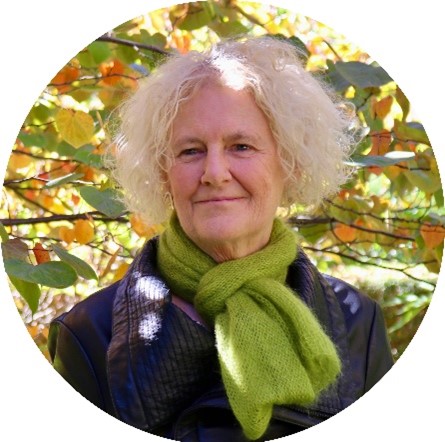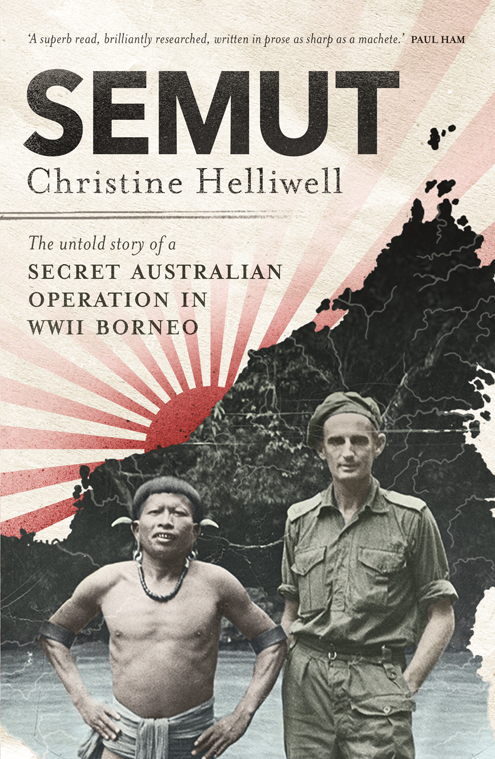Prof Helliwell opened her excellent presentation to an audience of 39 explaining about the secret Allied operations to take back Sarawak from the occupying Japanese in 1945.

The plan was for the Allies to send a small number of secret operatives to fight with the native peoples. Problematically intelligence was poor. Virtually nothing was known of the Japanese dispositions nor support given them by natives. Worse, nothing much was known about the native Dayaks, who had until recently been head hunters. Worryingly for the young operatives recruited for the mission, the ‘known’ intelligence included a cartoon of a native swinging a big knife and laughingly chopping off heads of white men who strayed into their territory.
Imagine the trepidation of the young soldiers parachuted into uncharted jungle with a terrifying and potentially dangerous ‘ally’. It worked out surprisingly well. The Dayaks were not indiscriminate killers of popular mythology nor inclined to massacre the spirit people they thought the operatives to be when they drifted out of the sky under big white umbrellas.
As it transpired, there was no pact between the Dayaks and the Japanese as contact had been limited. The Japanese had stuck to the coastal areas of the war. They had hardly ventured into the fetid jungle and considered the natives to be dangerous. The Dayaks, on the other hand, had hardly ventured out of their jungles. Certainly, they had heard of the invaders’ incredible cruelty and they didn’t want yet another colonial overlord.
Critically, the Japanese, now starving from the Allied blockade, had recently pushed inland to confiscate food and highly valued shot guns. The natives were starving. It wasn’t hard for the operatives to convince the Dayaks to go to war with the Japanese. Given the operatives were small in number and lacked even basic jungle skills and knowledge, the locals that became the backbone of the effort.
The campaign required unconventional warfare as it had to be with a small force with nothing much in the way of modern weapons. Combat involved small numbers of combatants (Dayaks) using stealth, trickery and terror in the kill or be killed, in a take no prisoners, fight to the bitter end kind of warfare. Dayaks were encouraged to cut off enemy heads as leaving behind headless corpses had a powerful psychological effect. The psychological impact of decapitations were so powerful that the Japanese became even more terrified to enter the jungle than they were before. Most of the operatives were strongly affected as well. The jungle and the nature of the warfare was more horrible than the operatives imagined and many had nightmares for years.
An example of a battle using unconventional tactics was in retaking a town. The town was well defended with Japanese troops, machine guns and artillery and so could not be taken with a frontal attack. Reconnaissance revealed that, when threatened by air, the Japanese scampered into covered over trenches on the outer perimeter of the settlement. A low-level flyover by was arranged to scare the Japanese into their shelters. At the given day and hour, the Dayaks came forward stealthily, leaving the clumsy, noisy operatives well behind. When the plane came over, the Japanese fled to the shelters. With their movement disguised by the haste and noise of the victims, the Dayaks got on the roof of some of the shelters with their long knives and then massacred unsuspecting Japanese as they exited their shelters after the raid was over.
Aside from motivating the attack and organising the airplane pass over, the operatives were not critical to the actual operation. To get to the battle site, a Dayak leader navigated through the almost trackless jungle and negotiated passage through other tribes’ territories for porters and combatants. During the attack setup, the operatives were kept well back so their clumsy movements didn’t alert the Japanese. They played no part in the actual attack while the Dayaks decided the tactics and carried out the execution of it.
Helliwell successfully documents a largely overlooked chapter in military history. She noted that most written accounts almost totally exclude the Dayaks and others from the narrative when in fact they played a large part and were essential to special operations in Borneo. In the telling, she rights of a wrong against the native peoples of Borneo by writing them into World War II history.
In her presentation, Prof Helliwell captured the ominous nature of unconventional warfare in the jungle and the sometimes-amusing nature of the life amongst the Dayaks but those poignant snippets hardly do justice to the book.
View the presentation here
About the presenter
 Christine Helliwell is an anthropologist and author, currently Emeritus Professor at the Australian National University in Canberra. She has been carrying out research on Borneo’s indigenous Dayak peoples for almost forty years and has published widely on Dayak social and cultural life.
Christine Helliwell is an anthropologist and author, currently Emeritus Professor at the Australian National University in Canberra. She has been carrying out research on Borneo’s indigenous Dayak peoples for almost forty years and has published widely on Dayak social and cultural life.
Since 2014 she has been researching WWII in Borneo and has travelled extensively throughout Sarawak, in the north of the island, interviewing elderly people who still remember the war. She has a particular interest in the special operations conducted in Borneo by the Australian secret organisation codenamed Services Reconnaissance Department (SRD), popularly known as Z Special Unit, and has interviewed most of their remaining Australian veterans.
In 2014 she was instrumental in organising a ceremony at the Australian War Memorial to honour SRD/Z Special Unit, and in 2018 she co-curated an exhibition at the Australian War Memorial about SRD operations in Borneo.
The book

Contact Brent D Taylor about this article.






